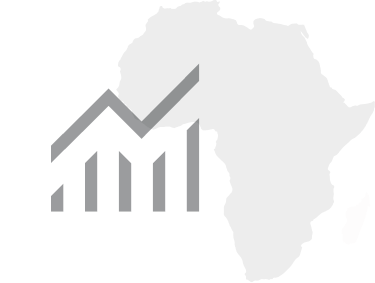Potential unfulfilled: Africa’s agriculture and the Rural Sector performance in the 2017 IIAG
22 March, 2018
The opinions expressed in this article are solely those of the author, and do not necessarily reflect the opinions or views of the Mo Ibrahim Foundation.
Feed Africa is the second of the five development goals, also known as the High 5s, that the President of the African Development Bank Group, Akinwumi Adesina, outlined in his inaugural address in September 2015. As the most important sector in Africa’s economy, contributing approximately to 15.0% of its GDP, agriculture has an enormous potential to raise the living standards of millions of Africans. As President Adesina put it:
agriculture is instrumental in Africa’s poverty: it must also be instrumental in its wealth.
Even though 70.0% of Africans are dependent on agriculture for their livelihoods, much of its potential remains untapped. According to the 2017 Global Report on Food Crises, 164.4 million Africans were food insecure in 2016, accounting for 13.4% of the continent’s population. This should not be the case in the region with the largest amount of undeveloped land, equivalent to 25.0% of the world’s fertile land. Moreover, low levels of agricultural productivity constitute a poverty trap for millions of farmers and hinder economic growth. The underperformance of Africa’s agriculture sector keeps rural incomes low and food prices high, reducing the sector’s job-creating potential.
Agriculture and agribusiness, which will grow to be a $1 trillion industry in Africa by 2030, is one of the most viable potential sources of employment for African youth. As fertility declines and the working age population increases, many African economies stand poised to take advantage of a 'demographic dividend'. Due to a total dependency ratio that is projected to experience a steady decline until 2085 (55.7%, compared to 82.6% in 2005), there will be a larger workforce supporting fewer children and elderly people, freeing up resources for development. However, if Africa is to make the most of this window of opportunity and reap the dividend, it needs to provide jobs for a youth population (aged 15-24) that will have doubled its size by 2050, growing from 230 to 452 million. While wage jobs in sub-Saharan Africa are estimated to absorb only 25.0% of the 350 million young people that will be entering the job market between now and 2035, farming and self-employment will have to provide gainful employment for at least 70.0% of young Africans joining the labour force until at least 2030.
Rural Sector in the IIAG

Meanwhile, government commitment and performance in the agriculture sector appears to be faltering in Africa in recent years. Although Rural Sector, which is one of the four sub-categories that are part of the Sustainable Economic Opportunity (SEO) category of the Ibrahim Index of African Governance (IIAG), constitutes the highest scoring sub-category in SEO in 2016 (51.5 out of 100.0), the African average score for Rural Sector has displayed warning signs over the past five years (2012-2016), deteriorating at an annual average rate of -0.13. This threatens to reverse the improvement experienced over the past ten years (2007-2016), at an annual average rate of +0.23.

The 2017 IIAG trend classification assesses country trends in the last five years (2012-2016), within the context of the last decade (2007-2016). These classifications provide analysis on potential shifting trends in the IIAG governance measures. Please see our blog Reading the 2017 IIAG results for more information. As the table above shows, of the 31 countries progressing over the past ten years, only seven manage to increase their pace of improvement over the past five years. Eight of those countries have slowed their pace of improvement and 16 follow a negative trajectory (exhibiting Warning Signs). Of the 21 countries experiencing a deterioration over the past ten years, nearly half (ten) have increased their speed of deterioration in the latter period.
Only five countries obtain a Rural Sector score that is higher than 70.0 in 2016: Rwanda, Mauritius, Morocco, Cabo Verde and Egypt (83.6, 79.7, 78.5, 72.5 and 72.0, respectively). Contrary to this, five countries obtain a score that is lower than 35.0: Chad, Central African Republic, Guinea-Bissau, South Sudan and Libya (32.1, 22.5, 21.6, 19.7 and 13.2, respectively).

At the indicator level, only two out of eight indicators in the Rural Sector sub-category have accelerated their pace of improvement over the past five years: Rural Business Climate and Rural Accountability & Transparency. Even though Rural Land & Water, Agricultural Support System and Engagement with Rural Organisations have progressed over the decade, they have slowed their speed of improvement in the latter period.
The indicator Agricultural Policy Costs, which assesses the nature of a country’s agricultural policy (ranging from excessively burdensome for the economy to balancing the interest of taxpayers, consumers and producers), follows the most concerning trajectory. Its pace of deterioration has nearly doubled in the past five years (at an annual average rate of -1.43 in the five-year period compared to -0.81 over the decade).
Rural Sector & Welfare: a very strong correlation

Welfare is one of the three sub-categories of the IIAG that are used to calculate the Human Development category score. It consists of nine indicators: Welfare Services, Social Safety Nets, Social Protection & Labour, Social Exclusion, Poverty, Poverty Reduction Priorities, Narrowing Income Gaps, Environmental Policy and Environmental Sustainability. The coefficient resulting from correlating the 2016 scores of the Rural Sector and Welfare sub-categories amounts to +0.80. This constitutes the highest correlation between Rural Sector and another sub-category of the 2017 IIAG. The strong positive correlation underscores the potential of the agricultural sector to improve the lives of millions of ordinary Africans. Six countries feature in the top ten highest scoring countries in both Rural Sector and Welfare in 2016: Botswana, Cabo Verde, Mauritius, Rwanda, Seychelles and South Africa. Rwanda ranks first in the two sub-categories (scoring 83.6 and 79.2, respectively).


